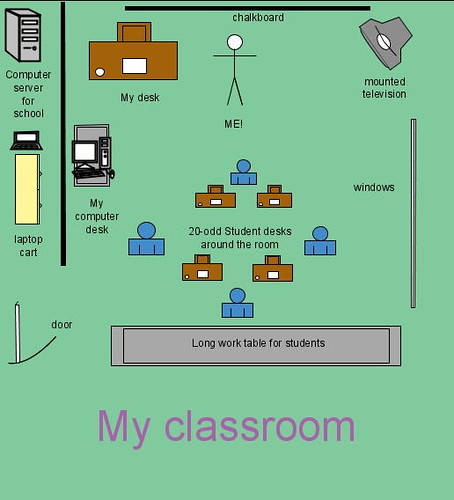I was tagged by Maria for a meme about the layout of my working space, meaning my teaching space. So here goes:
My classroom is the old computer lab, before everything but the outlets got ripped out when our technology budget was cut to nil and we needed classroom space. So I got moved one year into the room with the noisy server and air conditioning (the only room in the building that is nice in the hot summer months). The layout is tricky because the server is in a closet that we have to keep out of reach from curious children. I have managed to keep a long desk in the back of the room, which is helpful for laptop work, and in the center of the room is where the student desks are located, in different arrangements at different times of the year. My desk is off to the back corner, and it is a place I only rarely am at. It’s mostly a repository of “stuff” and I am not stuff!
But, hey, a picture is worth a thousand words, right? (I used Gliffy to create this)

Now, who to tag? How about Gail, Eric, Susan and David.
Peace (with teaching space),
Kevin



